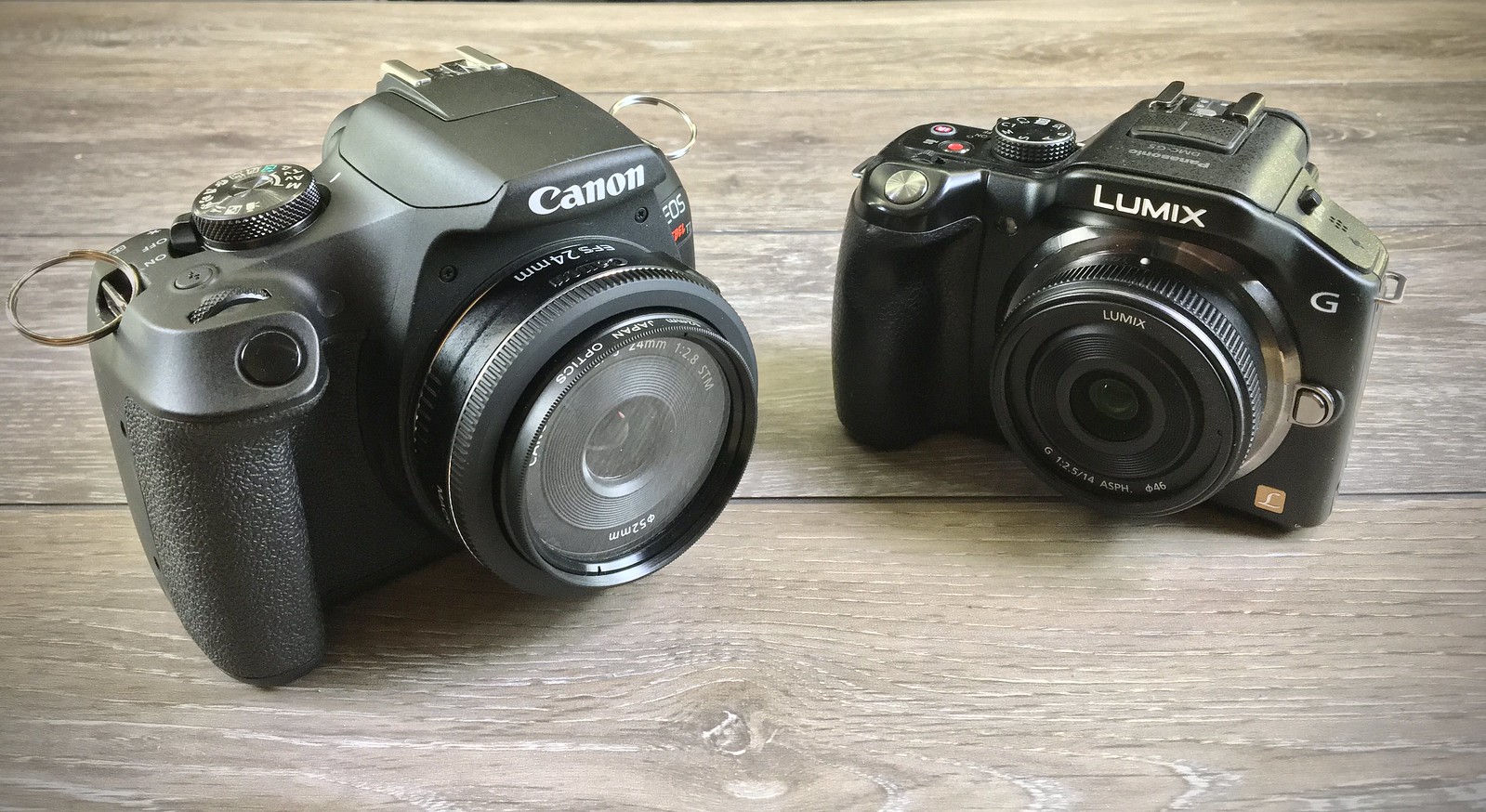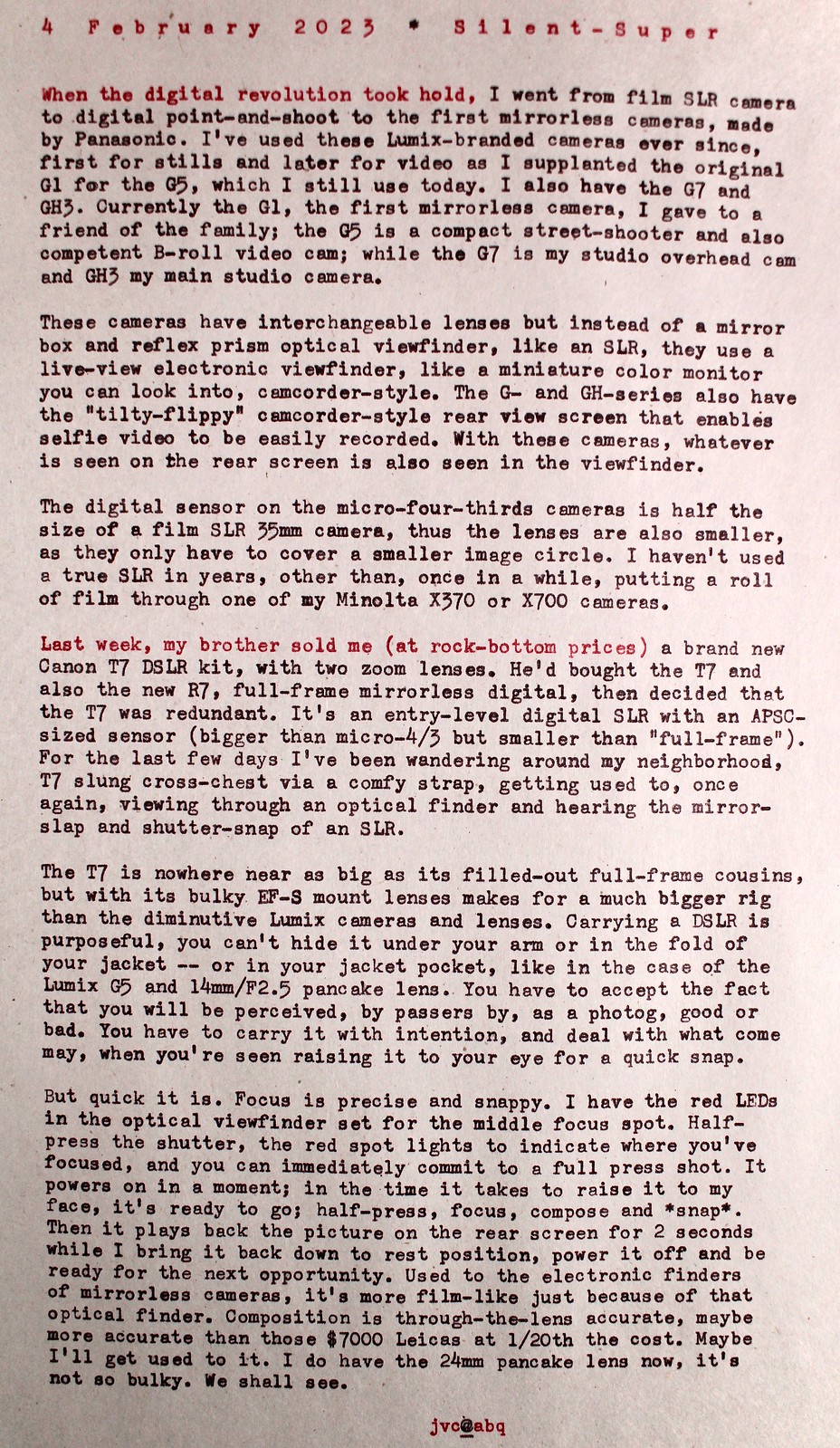Single Lens Reflex

The Canon T7 and Lumix G5 side-by-side with equivalent lenses

I don't yet have enough photos under my belt with the Canon T7 to know how using a DSLR will affect my photography over using a mirrorless, but if these few snaps are any indication, I'm still attracted to certain subject matter and the new camera hasn't hindered my creativity.

Yes, another "curb couch" found during my morning neighborhood walk. Enough of these and I forsee a Blurb book on the subject!

This was a quick grab shot through the side window of my car, as I was driving up Central Avenue adjacent to the Fair Grounds, where there's a casino race track and weekend flea market. I was able to get a snap of these bikers in motion, part of a larger group of them on a pleasant Sunday afternoon cruise. The Canon focuses very quickly, better than the Panasonic Lumix cameras.
These two images were made using the EFS 24mm F/2.8 lens, which has a 38mm-equivalent angle of view on APSC cameras, just about the perfect angle of view to mimic human vision. It's about the smallest EFS lens in Canon's lineup, and the widest prime they offer. Canon's main market seems to be toward sports and birding, as most of their lenses are bazooka-like telephotos and zooms. I can see this being the main lens I use on the T7.
I hinted in this piece about the difference between looking through the optical viewfinder of a DSLR versus electronic viewfinder of a mirrorless. With the mirrorless design, there's always going to be an intrinsic lag between what you see in the viewfinder and what's actually happening in front of you, because electronic circuits take time to process signals. This can cause you to miss critical action moments -- by the time you see them in the electronic viewfinder and press the shutter, they're already over. With optical viewfinders you're seeing events happen literally at the speed of light.
Other than DSLRs, in the current digital world the only cameras with optical viewfinders are some Fujifilm designs like the X100 series (whose viewfinder is a hybrid optical and electronic), and the Leica digital M-series rangefinders. Both the Fujifilm and Leica optical viewfinders are off-axis designs. You don't look through the "taking lens", so there's always going to be some intrinsic parallax error, especially critical when composing close-up to the camera. Also, depending on the size of the lens and lens hood, part of the optical viewfinder window will be obstructed.
Yes, this camera will record video, but because it lacks a flip-out screen is not very efficient for selfie-recordings; you can't verify it has your face in focus. Still, if you're willing to stay behind the camera and act as cameraman, it offers decent enough 1080P video up to 60 frames per second.
Digital single lens reflex cameras are currently rather out-of-fashion in the photography world. They're considered old-fashioned, a throwback to the early days of the digital photography revolution. The current crop of high-end digital offerings are mirrorless marvels that offer both stills and video capability, but the prices are also not inexpensive. Personally, I like the through-the-lens optical viewing and snappy autofocus of this humble, low-end Canon APSC model, it gives me the quick responsiveness of a rangefinder with more accurate framing, and autofocus, for a fraction of the Leica alternative offering, in a package that wouldn't break my heart if something untoward happened to it. Best of all, I don't have to cover up the red Leica badge with black tape, since there's no bragging rights for sporting a Canon logo!

1 Comments:
Nice camera.
I thought about a DSLR until I opted for MFT and the ability to use all my old 35mm lenses. I still like the sound and other aspects of an SLR for that my 35mm cameras still work fine.
Like film though, larger format = better quality image.
Post a Comment
<< Home